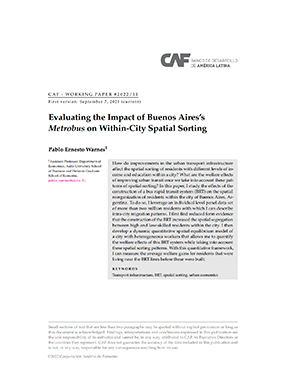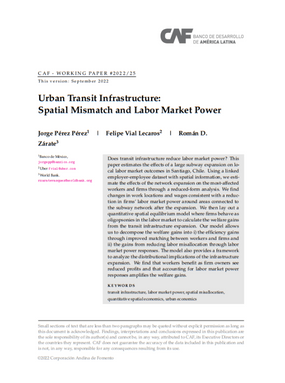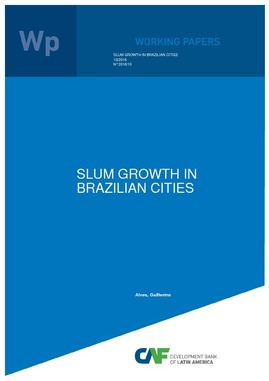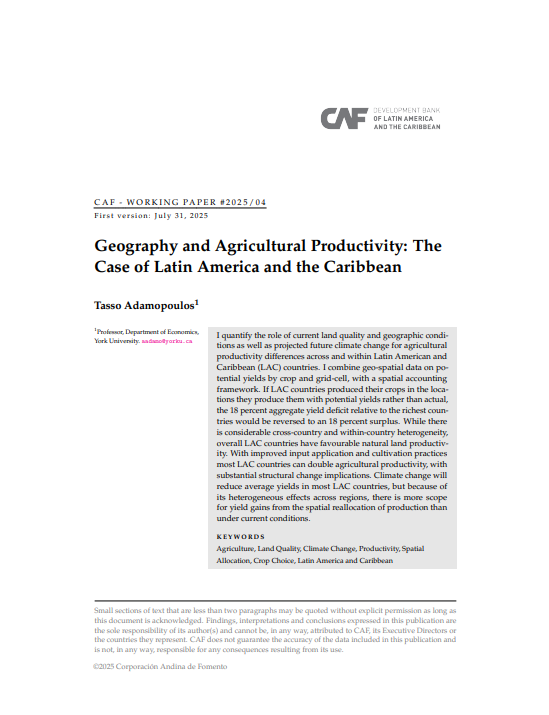Evaluating the Impact of Buenos Aires’s Metrobus on Within-City Spatial Sorting
Resumen
How do improvements in the urban transport infrastructure affect the spatial sorting of residents with different levels of in-come and education within a city? What are the welfare effects of improving urban transit once we take into account these pat-terns of spatial sorting? In this paper, I study the effects of the construction of a bus rapid transit system (BRT) on the spatial reorganization of residents within the city of Buenos Aires, Ar-gentina. To do so, I leverage an individual level panel data set of more than two million residents with which I can describe intra-city migration patterns. I first find reduced form evidence that the construction of the BRT increased the spatial segregation between high and low-skilled residents within the city. I then develop a dynamic quantitative spatial equilibrium model of a city with heterogeneous workers that allows me to quantify the welfare effects of this BRT system while taking into account these spatial sorting patterns. With this quantitative framework, I can measure the average welfare gains for residents that were living near the BRT lines before these were built.
Materia
País / Región
Fecha
2022-06-14Citar de esta publicación
Item perteneciente a la Colección

Autor
Warnes, Pablo ErnestoItems Relacionados
Urban Transit Infrastructure: Spatial Mismatch and Labor Market Power
Does transit infrastructure reduce labor market power? This paper estimates the effects of a large subway expansion on local labor market outcomes in ...
Slum Growth in Brazilian Cities
I study slum growth in contemporary urbanization processes by estimating a spatial equilibrium model with houses with and without basic water and ...
Geography and Agricultural Productivity: The Case of Latin America and the Caribbean
This working paper quantifies the role of current land quality and geographic conditions as well as projected future climate change for agricultural ...




